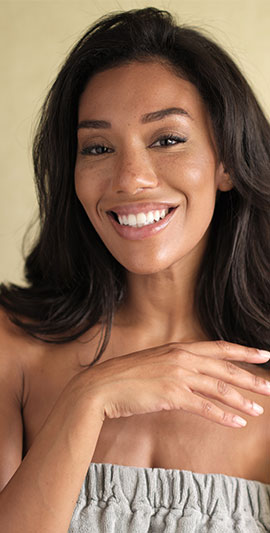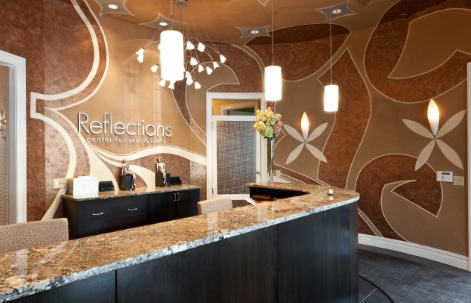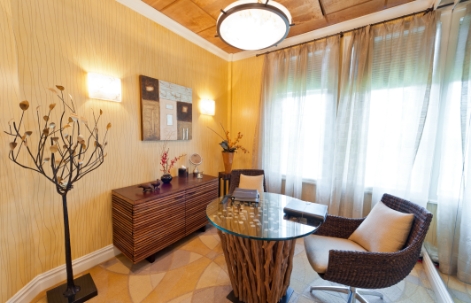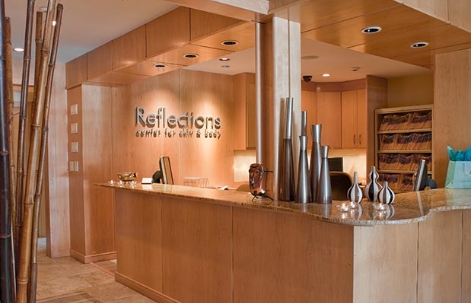Breakouts can be frustrating for many reasons, but there are fewer things more defeating than being left with scars and texture concerns as a result of aggressive acne. Despite the wide array of products promising to erase acne scars, the reality is that most patients require some professional intervention to get best results. If you’re looking for the best in acne scar treatments, our cosmetic physicians can discuss your options during a private consultation. Here’s what to know about acne scars and what can be done about them.
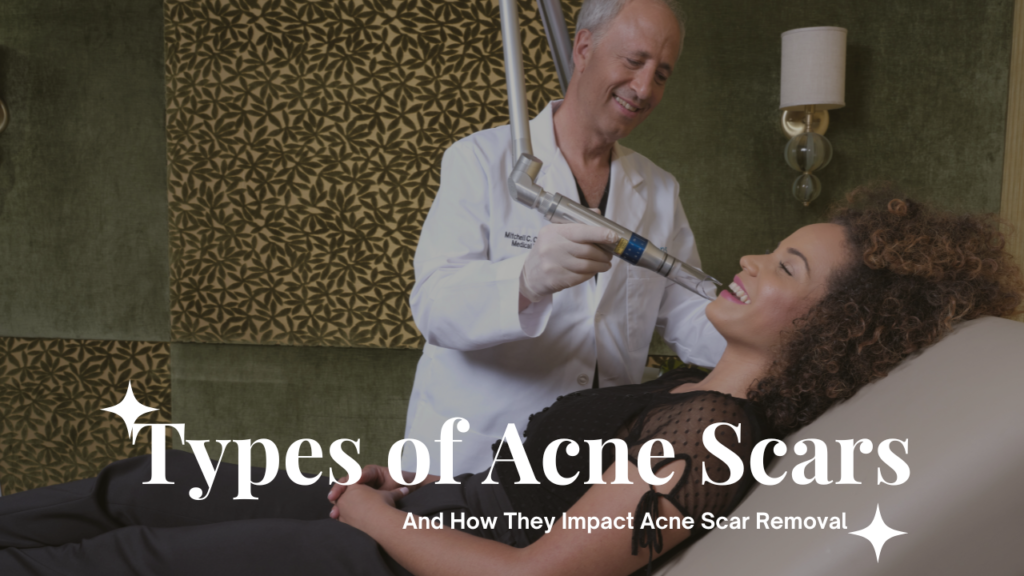
What types of acne scars exist?
There are many different types of acne scars that can depend on things like your skin, the acne that caused it, and many other factors. The type of acne scar will determine its best treatment option, so it’s best to know what to look for.
ATROPHIC SCARS
These are acne scars associated with loss of tissue—similar to scars that result from chicken pox— and are the most common types of acne scars.
MACULES
This includes flat, reddish spots that are the final stage of most inflamed acne lesions. After an inflamed acne lesion flattens, a macule may remain to “mark the spot” for a long period of time without treatment to remove them.
POST-INFLAMMATORY HYPERPIGMENTATION
This type manifests in discoloration of the skin at the site of a healed or healing inflamed acne lesion. It occurs more frequently in darker-skinned people, but can be seen in people with light skin. Early treatment may minimize the development of post-inflammatory hyperpigmentation, since it can persist for long periods of time and can be permanent.
ICE-PICK SCARS
These usually occur on the cheek. They are typically small, with a somewhat jagged edge and steep sides—like wounds from an ice pick. Ice-pick scars may be shallow or deep, and may be hard or soft to the touch.
DEPRESSED FIBROTIC SCARS
These scars are usually quite large, with sharp edges and steep sides. The base of these scars is firm to the touch. Ice-pick scars may evolve into depressed fibrotic scars over time.
SOFT SCARS
Soft scars are superficial or deep and are soft to the touch. They have gently sloping, rolled edges that merge with normal skin. They are usually small, and either circular or linear in shape.
ATROPHIC MACULES
These are usually fairly small when they occur on the face, but may be a centimeter or larger on the body. They are soft, often with a slightly wrinkled base, and may be bluish in appearance due to blood vessels lying just under the scar. Over time, these scars change from bluish to ivory white in color in light-skinned people and become much less obvious.
FOLLICULAR MACULAR ATROPHY
These are more likely to occur on the chest or back of a person with acne. These are small, white, soft lesions, often barely raised above the surface of the skin. This condition is sometimes also called “perifollicular elastolysis.” The lesions may persist for months to years.
What are the best treatments for acne scarring?
The treatment option the fits you best will depend on factors like the depth and severity of your scars, your budget, and your skin type. Here are some of the best options for treating acne scars both at home and with the help of a cosmetic physician.
Microneedling
This is often the most talked-about option when it comes to treating acne scars because many patients find great results with a package of treatments. It works by rolling or stamping a handpiece with many tiny needles on it across the skin, which creates micro-channels in the skin. This jumpstarts the skin’s natural wound-healing process, creating collagen and increasing cell turnover. If you opt for RF (radiofrequency) microneedling, it includes an additional benefit of skin tightening. It’s often combined with brightening products like vitamin C to reduce redness and pigmentation at the same time. Some patients find good results with dermarolling at home for minor scarring, which uses the same principle.
Chemical Peels
Chemical peels are best when performed regularly with a quick, in-office appointment. These treatments use a specialized chemical solution to exfoliate the skin and remove damaged or pigmented cells. At the appropriate depth for your acne scars, it can greatly reduce their appearance and texture with regular treatments. We offer a wide variety of chemical peel types and can create the right one for your skin type.
Laser Treatments
At Reflections, we offer a wide variety of laser platforms for virtually every concern. Whether it’s treating pigmentation, texture, or depth, laser treatments are some of the most effective and high-tech options. They often work best as a package of treatments, although your package will be unique to your skin, goals, and chosen platform. Laser treatments can range from light maintenance treatments to substantial resurfacing.
Dermal Fillers
For deep-rooted scars caused by a loss of volume, dermal fillers are great temporary treatments to fill them in and reduce their appearance. The length of your results will depend on your chosen filler, but most patients see results that range from a few months to over a year. If you opt for dermal fillers, you can benefit from professional skincare treatments at the same time to further restore the skin.
Surgical and Minimally Invasive Procedures
For substantial scarring, a more aggressive approach might be required. Sometimes, patients benefit most from surgical excision of extreme scarring. This usually means the scarred area is removed down to the underlying area of fat and then restored with sutures or skin grafts. We only recommend this option when you’ve explored all other options to no success.
Will my acne scars eventually fade?
This can be difficult to determine since everyone’s skin is different. In some cases, mild scars can fade so that they are no longer noticeable when wearing makeup. In other cases, they remain noticeable if they have texture or a sunken appearance. It’s important to keep in mind that they have the greatest potential to fade when you’re younger and your skin’s cell turnover is at its best. As you age, this process becomes slower, along with collagen production that can restore volume and smooth the skin. If you don’t want a professional procedure to address scarring, then our cosmetic physicians can recommend the best products to use at home for results.
Schedule a Consultation
Acne is one of the most difficult skin conditions that many patients deal with, and scars from acne are often an unpleasant reminder that can require professional treatment of its own. To begin discussing your options for acne scar treatments, contact our Martinsville or Livingston office by calling or filling out our online form.



